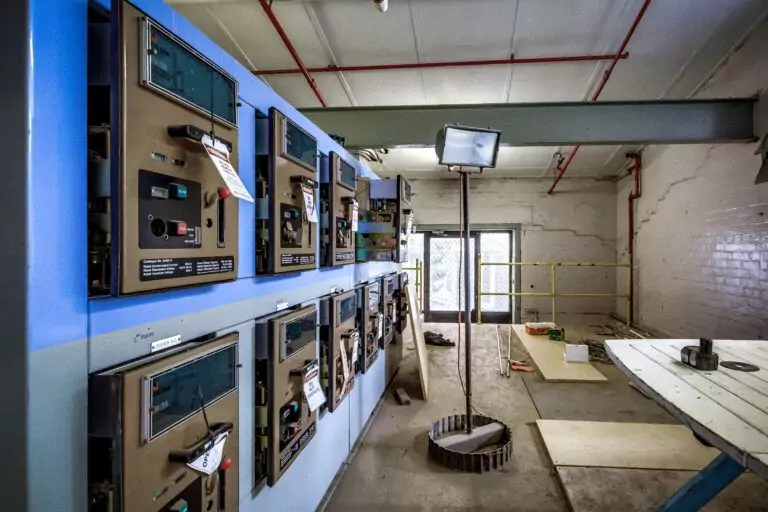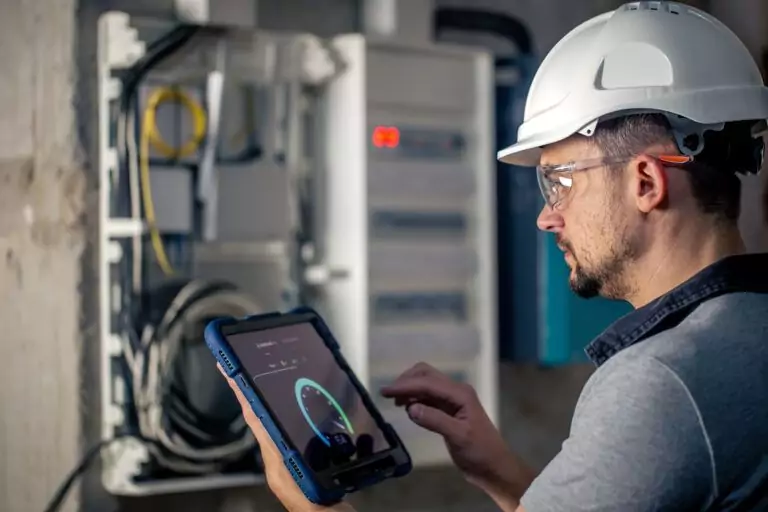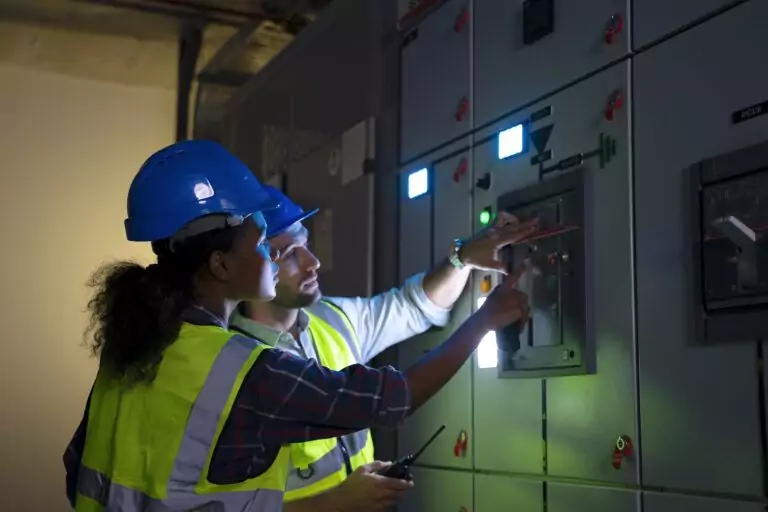Welcome to our deep dive into the world of Instrumentation & Control Engineering portfolios! If you’re navigating the intricate landscape of this specialized field, you already understand the value of showcasing your technical prowess and project accomplishments. A well-crafted portfolio isn’t just a collection of your work; it’s a testament to your problem-solving skills, technical versatility, and dedication to continuous learning.
Whether you’re a seasoned engineer looking to pivot in your career or a budding professional eager to make your mark, a strong portfolio can open doors to your next instrumentation and control engineering job. From highlighting your involvement in cutting-edge projects to illustrating your knack for optimizing complex systems, this guide will walk you through crafting a portfolio that not only reflects your expertise but also propels your career forward. Let’s embark on this journey to build a portfolio that stands out in the competitive field of instrumentation & control engineering.
Why is a Portfolio Important for an Instrumentation & Control Engineer?
A portfolio is crucial for an Instrumentation & Control Engineer for several compelling reasons, primarily because it provides a tangible demonstration of their technical skills, project experiences, and problem-solving capabilities. In the highly specialized field of instrumentation & control engineering, where the design, implementation, and optimization of systems and processes are paramount, a well-curated portfolio serves as a direct reflection of an engineer’s proficiency and expertise. Firstly, a portfolio allows engineers to showcase their involvement in diverse projects, highlighting their ability to design, analyze, and improve automated systems.
This is particularly important in an industry that values precision and innovation, as it gives potential employers or clients a clear view of an engineer’s practical experience and technical versatility. Secondly, it offers a platform for engineers to demonstrate their problem-solving skills. Instrumentation & control engineering often involves troubleshooting complex systems and ensuring they operate efficiently and safely.
Through case studies and project summaries included in their portfolio, engineers can illustrate how they have successfully addressed technical challenges, optimized processes, and implemented solutions in real-world scenarios. Moreover, a portfolio can also highlight an engineer’s continuous learning and professional development efforts. By including certifications, courses, and training relevant to instrumentation & control, engineers can show their commitment to staying updated with the latest technologies and methodologies in their field.
This is particularly important in a rapidly evolving sector where new technologies and regulations can significantly impact system design and operation. In essence, a portfolio is not just a collection of past projects; it’s a strategic tool that Instrumentation & Control Engineers can use to differentiate themselves in a competitive job market, prove their value to prospective employers, and advance their careers. By effectively communicating their technical competencies, project management skills, and commitment to professional growth, engineers can leverage their portfolio to open up new opportunities and establish themselves as experts in their field.
What Should be Included in an Instrumentation & Control Engineer’s Portfolio?
An Instrumentation & Control Engineer’s portfolio should be a comprehensive showcase of their technical prowess and project involvement.
Incorporating these elements into a portfolio not only highlights an engineer’s technical and analytical skills but also underscores their ongoing dedication to learning and professional development. This comprehensive approach ensures that the portfolio resonates with potential employers or clients, demonstrating the engineer’s readiness to tackle the challenges of contemporary instrumentation and control engineering.
Project Descriptions
Brief overviews that encapsulate the essence, scope, and role in projects, providing a snapshot of the engineer’s practical experience and contributions.
Detailed Project Objectives
Clarifications of the aims and goals for each project, outlining the engineer’s intended outcomes and the strategic value added to the project.
Technical Challenges and Solutions
Narratives that detail specific problems encountered during projects and the innovative solutions applied, showcasing problem-solving skills and technical ingenuity.
Technical Skills
A comprehensive list of the engineer’s core competencies, including analytical abilities, system design, and operational optimization skills, underscoring their technical foundation.
Programming Languages and Software
An enumeration of programming languages and software tools the engineer is proficient in, highlighting versatility and capability in digital toolsets essential for modern engineering tasks.
Systems Design and Analysis
Examples of the engineer’s ability to design, analyze, and optimize control systems, demonstrating a thorough understanding of system dynamics and operational efficiency.
Certifications and Courses
A record of professional development pursuits, including completed courses and certifications that validate the engineer’s expertise and commitment to staying current in the field.
Industry-Recognized Certifications
Listings of certifications recognized across the industry that attest to the engineer’s knowledge and proficiency in key areas of instrumentation & control engineering.
Relevant Continuing Education Courses
Details of courses undertaken to further knowledge and skills, reflecting the engineer’s dedication to continuous learning and professional growth.
Tools and Technologies Used
An inventory of the tools and technologies the engineer has experience with, showcasing hands-on experience with the instruments and software driving advancements in the field.
Specific Instrumentation Tools
Details on specific tools used for instrumentation tasks, providing insight into the engineer’s technical capabilities and familiarity with industry-standard equipment.
Control Systems and Software
Information on control systems and software the engineer has utilized, demonstrating expertise in the critical technologies that underpin modern automated processes.
How to Structure an Instrumentation & Control Engineer’s Portfolio?
Structuring an Instrumentation & Control Engineer’s portfolio begins with an Introduction that sets the stage, presenting the engineer’s professional identity and core competencies. A Personal Statement follows, offering insight into the engineer’s motivations, aspirations, and the unique perspective they bring to their field. Professional Goals should be clearly outlined, demonstrating a forward-looking approach to career development.
This structured approach ensures that the portfolio comprehensively represents the engineer’s abilities, achievements, and professional trajectory, making it a powerful tool for career advancement.
Introduction
Begin with a concise summary that introduces you, emphasizing your core competencies and areas of specialization within instrumentation & control engineering.
Personal Statement
Craft a narrative that reflects your passion for the field, your journey as an engineer, and what drives your professional pursuits, giving a personal touch to your portfolio.
Professional Goals
Outline your career objectives, detailing the types of projects you aspire to work on and the impact you aim to achieve in your field, showcasing a clear direction for your future.
Project Highlights
Select and showcase projects that best represent your skills and achievements. This section should serve as a quick snapshot of your most impactful work.
Key Projects Overview
Dive deeper into each selected project, providing context, your specific role, the challenges faced, and the solutions you implemented, highlighting your contributions and the value added.
Role and Contributions
For each project, explicitly detail your responsibilities, the skills you applied, and how your involvement was pivotal to the project’s success, emphasizing your unique contributions.
Technical Skills Overview
Present a comprehensive list of your technical skills, including systems design, programming languages, and any specialized tools or technologies you are proficient with, demonstrating your expertise.
Skill Categories
Organize your technical skills into categories such as programming, system analysis, project management, etc., to provide a structured and clear overview of your capabilities.
Proficiency Levels
Indicate your level of proficiency (e.g., beginner, intermediate, expert) for each skill, offering a transparent assessment of your strengths and areas for growth.
Educational Background
List your degrees and the institutions from which you obtained them, including any honours or distinctions, to underscore your formal training and academic achievements.
Degrees and Institutions
Detail the degrees you have earned, along with the names and locations of the institutions and the years of graduation, affirming your educational credentials.
Relevant Coursework
Highlight courses directly related to instrumentation & control engineering that have equipped you with foundational knowledge and specialized skills, further validating your expertise in the field.
Examples of Projects to Include in an Instrumentation & Control Engineer’s Portfolio
An impactful Instrumentation & Control Engineer’s portfolio should feature a variety of projects that collectively demonstrate the engineer’s breadth of skills, adaptability, and areas of expertise. Incorporating these projects into a portfolio not only showcases the engineer’s technical capabilities but also their strategic thinking and problem-solving skills, positioning them as a valuable asset in the field of instrumentation & control engineering.
Automation System Design Projects
Projects that showcase the design and implementation of comprehensive automation solutions, demonstrating the engineer’s ability to innovate and enhance system efficiency.
Factory Automation Systems
Examples of projects that focus on the automation of manufacturing processes, highlighting the engineer’s contribution to increasing productivity and reducing operational costs.
Building Automation Systems
Projects that involve the integration of technology to control and optimize building functions, emphasizing the engineer’s skills in improving energy efficiency and occupant comfort.
Process Control Optimization Projects
Case studies where the engineer has successfully optimized industrial processes, showcasing their expertise in enhancing operational effectiveness and resource utilization.
Oil and Gas Industry Projects
Projects within the oil and gas sector that highlight the engineer’s specialized knowledge in managing complex systems under demanding conditions, ensuring safety and reliability.
Pharmaceutical Manufacturing Projects
Examples of the engineer’s work in pharmaceutical manufacturing, demonstrating precision and adherence to strict health and safety standards.
Instrument Calibration and Maintenance Projects
Projects focused on the calibration and maintenance of instrumentation, underscoring the engineer’s attention to accuracy, reliability, and quality control.
Calibration Standards and Procedures
Documentation of projects that adhere to or establish calibration standards and procedures, showcasing the engineer’s commitment to industry best practices.
Preventive Maintenance Programs
Examples of the engineer’s involvement in developing or implementing preventive maintenance programs, highlighting a proactive approach to system maintenance and longevity.
Tips for Showcasing Projects in the Portfolio
When showcasing projects in an Instrumentation & Control Engineer’s portfolio, utilizing Visuals and Diagrams can significantly enhance the presentation, making complex projects more accessible and understandable.
These strategies not only display the engineer’s technical skills and project achievements but also illustrate their ability to communicate complex information effectively, an invaluable skill in the engineering field.
Use of Visuals and Diagrams
Incorporate diagrams and visuals to simplify complex concepts, making the projects more engaging and easier to understand.
Circuit Diagrams and Flowcharts
Utilize circuit diagrams and flowcharts to provide a clear visual representation of technical solutions and project workflows.
Before and After Photos
Showcase the direct impact of your work through before and after photos, visually highlighting the improvements and transformations achieved.
Brief Project Summaries
Offer concise summaries for each project, outlining objectives, challenges, and outcomes, giving viewers a quick yet comprehensive understanding.
Problem Statement
Clearly define the problem each project aimed to solve, setting the context for the solutions you developed and implemented.
Solution and Technologies Used
Detail the solutions you devised and the technologies you employed, demonstrating your problem-solving approach and technical proficiency.
Impact and Results-Oriented Descriptions
Focus on the results and the impact of your projects, emphasizing the tangible benefits and value your work contributed.
Quantifiable Improvements
Highlight improvements with quantifiable data, such as performance metrics or efficiency gains, to underscore the effectiveness of your solutions.
Efficiency Gains
Detail any increases in efficiency or productivity, providing specific examples of how your work optimized processes or systems.
How to Use the Portfolio for Job Applications
When leveraging an Instrumentation & Control Engineer’s portfolio for job applications, it’s essential to Tailor the Portfolio to the Job Description, identifying and highlighting projects and skills that directly align with the employer’s requirements. This approach demonstrates a clear understanding of the role and showcases the candidate’s suitability. Identifying Key Skills and Experiences that match the job criteria allows for a focused presentation of relevant achievements.
Effectively using a portfolio in this manner not only highlights an engineer’s technical competencies and project achievements but also demonstrates their strategic thinking and adaptability, key qualities for success in the field of instrumentation & control engineering.
Tailoring the Portfolio to the Job Description
Adjust your portfolio to reflect the specific requirements and preferences outlined in the job description, ensuring a direct match between your showcased skills and the employer’s needs.
Identifying Key Skills and Experiences
Pinpoint the skills and experiences most relevant to the position you’re applying for, preparing to highlight these prominently within your portfolio.
Customizing Project Selection
Choose projects for your portfolio that best align with the prospective job’s responsibilities and objectives, demonstrating your direct applicability and readiness for the role.
Highlighting Relevant Projects and Skills
Focus on projects and skills within your portfolio that are most relevant to the job, using these to illustrate your capability and fit for the position.
Matching Projects to Job Requirements
Ensure that the projects you include clearly correspond to the job requirements, showcasing your experience and proficiency in areas critical to the role.
Emphasizing Unique Contributions
Detail your specific contributions to projects, highlighting how your individual efforts led to successful outcomes and how these can translate to value for the prospective employer.
Including Testimonials or References
Incorporate testimonials or references from clients, supervisors, or peers to provide third-party validation of your skills, work ethic, and contributions.
Client or Supervisor Testimonials
Feature testimonials from clients or supervisors that speak to your professional abilities, work ethic, and the impact of your contributions on projects.
Peer Recommendations
Include recommendations from peers to showcase your ability to work effectively within teams and your positive influence on project outcomes.
Maintaining and Updating the Portfolio
For an Instrumentation & Control Engineer, maintaining and updating the portfolio is an ongoing process that ensures the documentation of professional growth and evolving expertise. Expanding Skill Sets with Continuous Learning through Online Courses and Workshops, Industry Conferences, and Seminars not only enhances the engineer’s capabilities but also adds significant value to the portfolio by demonstrating a proactive approach to career advancement and a dedication to staying at the forefront of the field.
Regular Updates with New Projects
Ensure your portfolio remains current by frequently adding new projects that showcase your latest work and achievements.
Adding Recent Projects
Incorporate the most recent projects you’ve worked on to demonstrate your ongoing involvement and success in the field.
Reflecting Evolving Skills
Update your portfolio to display your developing skills and knowledge, showing your growth as a professional.
Incorporating Feedback
Integrate constructive feedback from peers, mentors, and industry experts to refine and enhance your portfolio.
Professional Peer Reviews
Seek out reviews from professional peers to gain insights into your portfolio’s strengths and areas for improvement.
Mentor Suggestions
Incorporate suggestions from mentors who can offer valuable guidance on how to effectively showcase your expertise.
Expanding Skill Sets with Continuous Learning
Demonstrate your commitment to professional development by continuously expanding your skill set through learning.
Online Courses and Workshops
Include certifications and skills acquired from online courses and workshops to highlight your dedication to ongoing education.
Industry Conferences and Seminars
Show participation in industry conferences and seminars, illustrating your engagement with the professional community and current trends.
Bringing Your Expertise to Life on Paper
Creating a standout portfolio as an Instrumentation & Control Engineer means more than listing your projects; it’s about telling the story of your technical journey, your problem-solving mindset, and your passion for innovation. By thoughtfully presenting your skills, experiences, and growth, you position yourself to make a powerful impression in any job market.
At Vista Projects, we recognize the value of real-world engineering experience, and we’re always on the lookout for professionals who can turn technical insights into impactful solutions. Our integrated project teams thrive on collaboration, precision, and innovation.
Ready to turn your portfolio into your greatest career asset? Connect with Vista Projects and discover where your expertise can take you.









